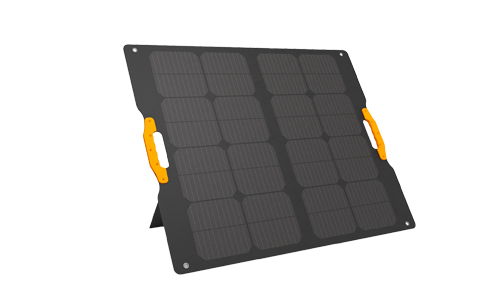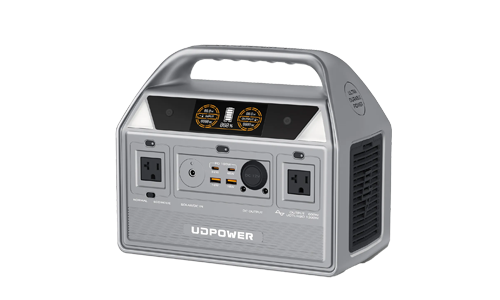What Can a 1000W Portable Power Station Run?
ZacharyWilliamA 1000W portable power station is a versatile backup power solution for camping, RVs, and home emergencies. But what exactly can you run with it safely and efficiently? This comprehensive guide breaks down what a 1000W unit can power, how long it runs each device, and other common questions to help you plan your power usage confidently.

Table of Contents
- 1. Understanding Wattage: What Does 1000W Mean?
- 2. Common Devices a 1000W Portable Power Station Can Run
- 3. What It Cannot Run
- 4. How Long Can a 1000W Power Station Run These Devices?
- 5. Tips to Maximize Your 1000W Power Station Usage
- 6. Related Questions
- 7. Conclusion
1. Understanding Wattage: What Does 1000W Mean?
Wattage measures the rate of energy consumption or production. A 1000W portable power station can continuously deliver up to 1000 watts of power to devices. It's important to distinguish between:
- Rated Power (Continuous Output) – the maximum wattage it can supply steadily.
- Peak Power (Surge) – the maximum it can handle momentarily for devices with startup surges (e.g., mini-fridges).
For example, if your coffee maker consumes 800W, your 1000W power station can handle it with room to spare.
2. Common Devices a 1000W Portable Power Station Can Run
Here is a detailed table listing devices compatible with a 1000W power station along with their approximate wattage and estimated runtime (assuming a 1000Wh battery at ~85% usable capacity).
| Device | Typical Power (W) | Estimated Runtime | Compatible? |
|---|---|---|---|
| Laptop | 60 | ~14 hours | ✅ |
| Smartphone charger | 15 | ~56 hours | ✅ |
| Tablet | 30 | ~28 hours | ✅ |
| Wifi Router | 12 | ~71 hours | ✅ |
| LED Desk Lamp | 10 | ~85 hours | ✅ |
| Monitor (24-27") | 50 | ~17 hours | ✅ |
| Small Desktop PC | 250 | ~3.4 hours | ✅ |
| Electric Blanket | 100 | ~8.5 hours | ✅ |
| CPAP Machine | 40 | ~21 hours | ✅ |
| Camping Fan | 15 | ~56 hours | ✅ |
| Coffee Maker | 800 | ~1 hour | ✅ |
| Blender | 500 | ~1.7 hours | ✅ |
| Toaster | 1000 | ~0.85 hours | ⚠️ Check exact wattage |
| Mini Fridge | 70 (avg) | ~12 hours | ✅ |
| Cordless Tool Charger | 100 | ~8.5 hours | ✅ |
| Small Electric Drill | 600 | ~1.4 hours | ✅ |
| Small TV (32-42" LED) | 80 | ~10.6 hours | ✅ |
| Projector | 200 | ~4.2 hours | ✅ |
| Game Console (PS5/Xbox) | 200 | ~4.2 hours | ✅ |
| Electric Shaver | 20 | ~42 hours | ✅ |
| Electric Toothbrush Charger | 5 | ~170 hours | ✅ |
| Portable Speaker | 20 | ~42 hours | ✅ |
| Camera Battery Charger | 15 | ~56 hours | ✅ |
| LED String Lights | 10 | ~85 hours | ✅ |
| Electric Skillet | 1000 | ~0.85 hours | ✅ |
| Rice Cooker (small) | 500 | ~1.7 hours | ✅ |
| Small Slow Cooker | 250 | ~3.4 hours | ✅ |
| Portable DVD Player | 25 | ~34 hours | ✅ |
| Handheld Vacuum | 400 | ~2.1 hours | ✅ |
| Car Fridge (12V) | 50 | ~17 hours | ✅ |
How to read this table:
- The Estimated Runtime is calculated based on a 1000Wh power station with ~85% usable capacity (≈850Wh).
- Runtime = (Usable Capacity in Wh) ÷ (Device Power in W). Actual performance may vary based on device efficiency, inverter loss, and ambient temperature.
- For high-wattage devices (e.g. coffee makers, toasters), runtime shows how long they could run continuously at full power. In real use, these devices often run only for a few minutes each time, so you can use them multiple times within the total runtime shown.
- “Compatible?” indicates whether a typical 1000W power station can power the device safely based on its continuous wattage requirement. Always check your device's actual wattage before use.
- If using multiple devices simultaneously, total wattage must not exceed 1000W, and the battery will drain faster.
Note: For devices with motors or compressors (e.g. mini fridges, drills), check their startup surge power to ensure it is within your power station's peak power rating.
3. What It Cannot Run
There are limitations to a 1000W portable power station. Avoid running:
- Hair dryers (1200-1800W)
- Microwave ovens (1000-1500W+)
- Electric kettles (1200-2000W)
- Full-size refrigerators (startup often exceeds 1000W)
- Air conditioners (typically 1000-2000W+)
- High-wattage power tools (circular saws, table saws)
4. How Long Can a 1000W Power Station Run These Devices?
To estimate runtime:
- Check battery capacity (e.g. 1000Wh).
- Divide capacity by device wattage to estimate hours.
Example: Running a 60W laptop with a 1000Wh power station:
1000Wh / 60W = ~16.6 hours (account for ~85% inverter efficiency → ~14 hours actual).
Factors affecting runtime:
- Inverter efficiency (80-90%)
- Battery degradation over time
- Simultaneous multiple device usage
5. Tips to Maximize Your 1000W Power Station Usage
- Use energy-efficient devices to extend runtime.
- Avoid running at maximum capacity continuously to reduce strain.
- Fully charge and maintain your power station regularly.
- Calculate surge wattage before using motor-driven devices (fans, fridges).
6. Related Questions
-
Can a 1000W portable power station run a refrigerator?
✅ Yes, it can run most mini fridges and some energy-efficient refrigerators with running power under 1000W. However, always check the startup surge wattage to ensure it does not exceed your station’s peak output. -
What size power station do I need for camping?
💡 A 500W to 1000W power station is ideal for typical camping needs such as lighting, phones, laptops, fans, and small cooking appliances. Choose based on your total wattage requirements and desired runtime. -
What is the difference between 500W, 1000W, and 2000W power stations?
🔋 The main difference is output power and usable capacity. A 500W station powers basic devices; 1000W can handle small appliances; 2000W can run heavy-duty appliances like kettles, microwaves, or power tools. -
How do I calculate what my power station can run?
🧮 Divide the usable watt-hours (Wh) by your device wattage (W) to estimate runtime. Ensure total device wattage does not exceed the station’s rated continuous output. -
Can I use a 1000W power station for my CPAP machine overnight?
✅ Yes. Most CPAP machines use 30-60W. A 1000Wh station can power a CPAP for ~14-21 hours, depending on settings and humidifier use. -
Does a higher wattage power station last longer?
⚠️ Not necessarily. Runtime depends on battery capacity (Wh), not just output wattage. A higher wattage station may have a larger battery, but check Wh ratings for accurate comparisons. -
Can I charge my electric car with a 1000W portable power station?
🚗 No. Charging an electric car requires much higher power output and voltage than a typical 1000W portable station can provide. -
How many devices can I run at the same time on a 1000W power station?
🔌 As many as you like, as long as the total wattage does not exceed 1000W continuous output. Check each device's power rating before plugging in multiple devices simultaneously. -
What appliances should I avoid using with a 1000W power station?
⚠️ Avoid appliances over 1000W such as hair dryers, electric kettles, microwaves, induction cooktops, and air conditioners. -
Is a 1000W power station enough for emergency home backup?
✅ It can cover essential small devices – phones, laptops, lighting, WiFi, and small fridges – for short power outages. For large appliances or whole-home backup, a higher wattage system is needed. -
How long does it take to recharge a 1000W power station?
⏱️ Typically 5-8 hours via wall outlet, 6-10 hours via compatible solar panels (depending on input wattage and sun conditions). -
Can I use solar panels to recharge a 1000W power station?
☀️ Yes. Check your station's solar input specs (e.g. max 200W input) and use compatible panels to recharge off-grid. -
What is the lifespan of a 1000W portable power station?
🔋 Most lithium iron phosphate (LiFePO4) models last 3000-5000 charge cycles (8-10 years). Regular maintenance and avoiding deep discharges extend lifespan.
7. Conclusion
A 1000W portable power station is ideal for powering most small to medium devices, making it a reliable companion for camping, RV travel, and home backup. Always check each device’s wattage and your station’s capacity to ensure safety and optimal performance.
Continue Reading:


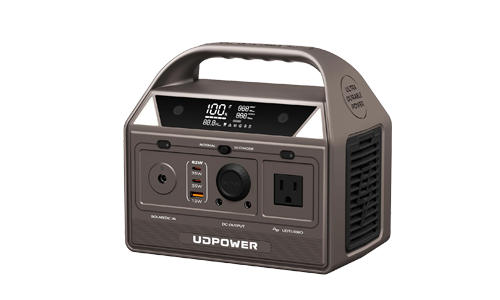
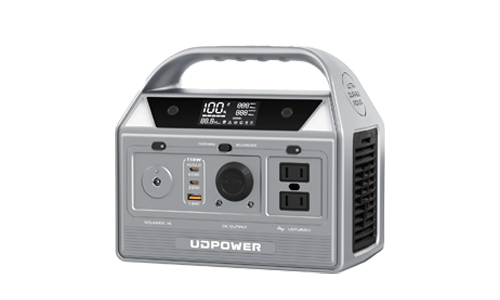
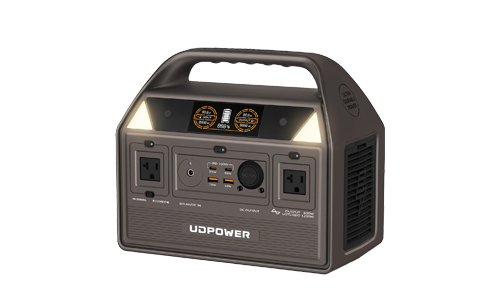
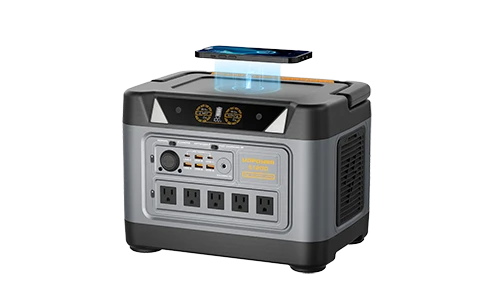
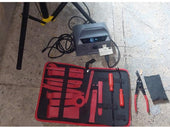
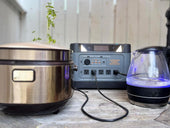
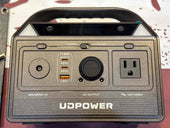
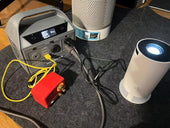
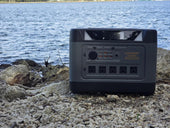
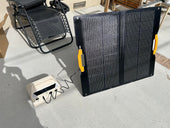















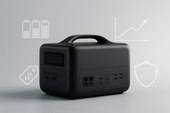







![How to Live In The Woods [Complete Guide]](http://udpwr.com/cdn/shop/articles/Off-Grid_Cabin_Option_f6c94fe7-1ae7-4c3a-baf5-ed9fe684c832.png?v=1763523215&width=170)





